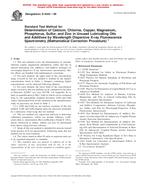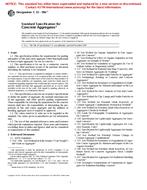1.1 This guide is intended to assist emergency medical services (EMS) agencies and institutions in selecting and utilizing individuals who teach in EMT (emergency medical technician) training programs which include instruction in advanced life support knowledge and skills.
1.2 This guide identifies six categories of instructor in an ALS/EMT (advanced life support/emergency medical technician) training program:adjunct instructor, clinical/field preceptor, practical skills instructor, associate instructor, course instructor/coordinator (I/C), and course administrator. The guide recognizes that an individual may, depending on his/her level of practice and the training program involved, function in any or all of these categories.
1.3 This guide includes specific guidelines for qualifications, training, education, experience, scope of authority, responsibilities, continuing education, evaluation, and maintenance of competency when applicable.
1.4 This guide does not include specific guidelines for the course administrator or the adjunct instructor. While the guide recognizes, by offering a definition of each category, that these types of individuals function in many ALS/EMT training programs, the limited instructional roles played by these individuals precludes the need for specific selection and utilization guidelines.
1.5 This guide is intended to apply to any individual who teaches in ALS/EMT training programs regardless of the individual’s present level of clinical practice.
1.6 This guide intentionally omits references to length of prehospital care experience, teaching experience, and continuing education requirements. This guide also omits reference to waiver or equivalency. These issues should be addressed by the appropriate agency.
1.7 This guide applies only to instructors who teach in advanced life support training courses designed to prepare an individual for certification to practice as an EMT above the level of the EMT (basic). It does not apply to instructors who teach in specialized courses that do not in themselves qualify the individual for a level of EMT certification.
1.8 This guide does not establish certification requirements. Such requirements should be established by the certifying agency in the jurisdiction in which the ALS/EMT instructor will function. This guide may be used to provide considerable guidance to the jurisdiction responsible for establishing certification standards.
1.9 This standard does not purport to address all of the safety concerns, if any, associated with its use. It is the responsibility of the user of this standard to establish appropriate safety and health practices and determine the applicability of regulatory limitations prior to use.
Note 1 – Also see Practice F1031.
Product Details
- Published:
- 01/01/2002
- Number of Pages:
- 5
- File Size:
- 1 file , 38 KB


